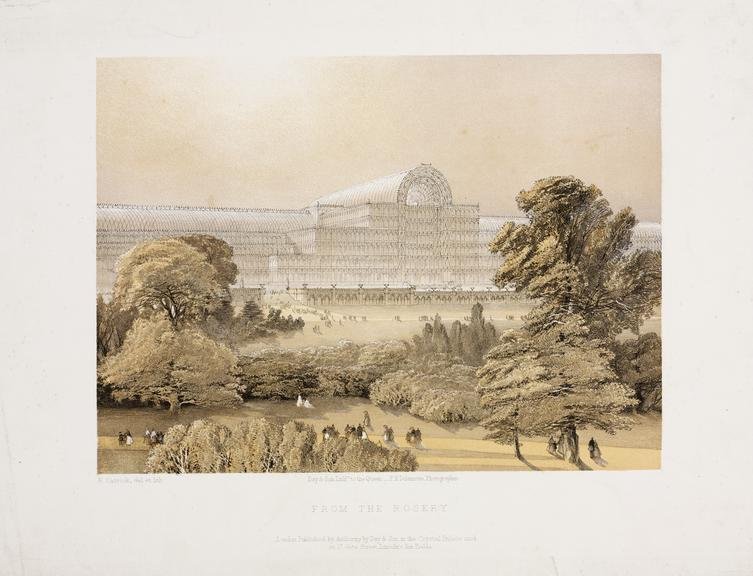THE INVENTION OF THE VACUUM CLEANER
In 1901, if you were lucky, you might have witnessed a startling scene on the streets of London—one which would quickly revolutionise how most of us clean our homes.
 Science Museum Group Collection
Science Museum Group CollectionScience Museum Group Collection
Engineer Hubert Cecil Booth was rolling his new vacuum cleaner onto the wealthier streets of town.
First employed by Maudslay, Sons and Field in Lambeth in the 1890s, at the time he was better known for designing suspension bridges and fairground Ferris wheels (including Vienna’s famous Riesenrad).
But in 1901 he turned his skill to carpet cleaning after witnessing the demonstration of a new machine at London’s Empire Music Hall.
He realised that the machine on display had a fatal flaw. It was designed to blow out air in the hope of raising the dust from the carpet and into the collecting bag. The inventor told him that the method Booth suggested instead—sucking up the dirt through a filter—was impossible.
Challenge accepted, Booth set off on a mission to produce a machine that would suck, not blow.
After allegedly near-fatal tests—in which he choked after putting a handkerchief ‘filter’ over his mouth and sucking up dust from the arm of a chair—Booth formed the British Vacuum Cleaner Company and launched his new device. This was the huge beast of a machine seen doing the rounds of wealthy Londoners’ homes at the start of the 20th century.
Channelling a red and gold fire engine aesthetic, according to journalist and author Jane Furnival, the distinctive horse-drawn vacuum cleaner and its liveried operators arrived at your house, immediately advertising to the neighbourhood that you were holding a ‘vacuum tea party’. A visit wasn’t cheap—the cost was the same as the annual wages of a ‘tweeny’, a junior domestic maid.
To conduct the miraculous cleaning, long hoses were fed through windows, the petrol-powered motor (and later electric engine) was started and air was drawn by suction from the hose and nozzles through a filter.
 Science Museum Group Collection
Science Museum Group CollectionScience Museum Group Collection
Locals outside were encouraged to marvel at the amount of dirt and dust collected through a special glass chamber on the side of the machine—another cunning marketing strategy.
VACUUM CLEANING AS A LUXURY
After a flurry of disapproval and a string of court cases, both against the disruption the machine caused on the streets (including frightening horses) and from a series of disgruntled inventors, Booth finally convinced judge and jury that his powerful machine was the only vacuum cleaner at the time that actually worked.
Cleaning everywhere from Buckingham Palace to the Royal Mint and Crystal Palace—where 26 tons of dust were removed from the girders during a First World War outbreak of spotted fever—its credentials were soon established as a reliable cleaning machine.
 Science Museum Group Collection
Science Museum Group CollectionScience Museum Group Collection
Vacuum cleaners were purchased by Russia’s Tzar Nicholas II, Germany’s Kaiser Wilhelm II, the House of Commons and the popular Dickens & Jones department store in London.
Despite the drama and theatre of Booth’s machine, the basic technology and the suction principle was the same as in most vacuum cleaners today. Vacuum cleaners soon got smaller, more portable and—most importantly—cheaper. Smaller motor-powered vacuum cleaners, famously from Hoover and Electrolux, began to appear before 1915.
For wealthier households, the annual evacuation so servants could complete their spring cleaning became a thing of the past. Rich homeowners purchased the new vacuum cleaners, eager to be seen as early adopters of the technology, or looking to retain domestic help made scarce by the First World War.
 Science Museum Group Collection
Science Museum Group CollectionScience Museum Group Collection
HOOVERING FOR THE MASSES
The British association of the vacuum cleaner with the word ‘Hoover’ came from the American company’s advertising strategies and dominance in the British market. Asthmatic American inventor James Spangler sold his idea for an electric broomstick-like cleaner—with cloth filter and dust-collection bag attached to the long handle—to William Hoover in 1908.
Science Museum Group CollectionMore informationabout Attachments for Hoover model 700 vacuum cleaner, c.1930
His invention proved to be arguably the first truly practicable domestic vacuum cleaner. The Hoover Company’s huge British factory, built at Perivale near Wembley in the 1930s, produced smart-looking machines which appealed to the modern consumer.
 Walter Nurnberg/Science Museum Group Collection
Walter Nurnberg/Science Museum Group CollectionWalter Nurnberg/Science Museum Group Collection
But vacuum cleaning still hadn’t quite made it to the masses.
Given the high costs involved in purchasing new electric appliances together with the lack of electrical power provision, most people continued to clean their carpets, rugs and curtains in more traditional low-tech fashion until after the Second World War.
Many 1950s householders would still have identified with Victorian housemaid Miss Kirby’s description of carpet cleaning: armed with dustpan, a selection of hand brushes and a long-handled sweeping brush you ‘just got down on your hands and knees and brushed’.
VACUUM CLEANER MODELS
Vacuum cleaners from throughout the 20th century in our collection:
via sciencemuseum.org